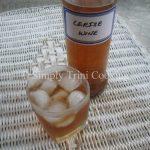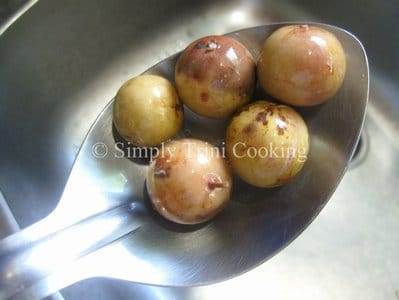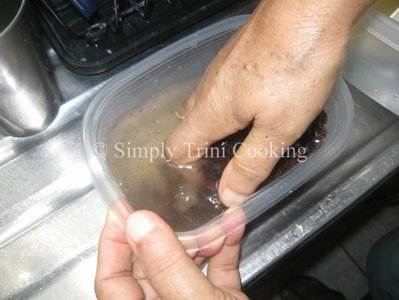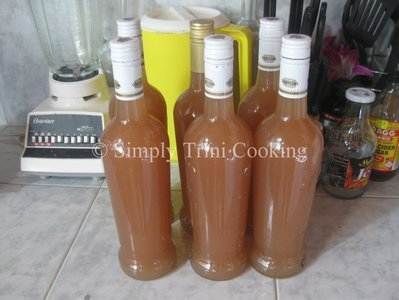Have you ever had cerise wine? Most of us will know more about the cerise fruit.
Cerise Fruit to Cerise Wine
As a boy growing up in the 80’s, the Cerise fruit ( Flacourtia indica ) was not much of a favourite of mine. First of all, the tree had a lot of picka (thorns) and that was a turn off, because you couldn’t climb the tree readily. Then you had to deal with the fruit itself. There were a lot of seeds to contend with and after wrestling with the seeds in your mouth for a while there wasn’t much “flesh” to eat. Jeezan ages!
But, it was all good and helped us pass time. Purpled tongues and maybe a bit of “rack” or “tie tongue” sensation in our mouths was commonplace between my friends and I as we raided a Cerise tree or two. And, it would have been short lived anyway because by then Pommerac would have been in season and the Pommerac tree would have been laden with fruit, boughs almost to touch the ground, straining under the weight, begging us to ease its burden lol!……
Those were the days. The seedy Cerise fruit left an indelible taste memory in my mind and I cannot get it out of my head. That’s where the idea for the wine came or rather popped into my mind one day. So, while up in the countryside mom got my nephew to pick some of the fruit to make some Cerise wine since it was not commonly done at home. We were accustomed to more passion fruit, rice, cashew, guava, pommerac and five finger wine, made just in time for the Christmas season. So off to another wine making adventure we went……
…….As I held the bottle of red tinged Cerise wine up against the light to admire the colour, I sighed. It was worth it, one sip and the fruitiness was there like I remembered when I was young; pastelle shades of flavour tingled my taste buds and evoked all those taste memories that were locked away; waiting for the right time; the right stimulus; to be alive again if but for a moment taking you down memory lane….
*pause, reminisce for a while and nod in agreement :-)*
How to Make Cerise Wine
Anyhow, it’s your now turn to experience your first memories of tasting Cerise wine or the fruit for that matter.
Cerise Wine Recipe
Cerise Wine
5 cups cerise
4 cups sugar
2 tbsp yeast
5 l water
To sweeten after 21 days
5 c sugar
1 c raisins
Before we begin remember to sterilize all utensils with hot water and put the 5 L of water to boil then cool.
Wash the Cerise
Place the Cerise into a bucket and pour the 5 L of water.
Add sugar and yeast. Stir.
Cover lightly and allow to “set” for 21 days.
=======================================================
21 days has passed , or at least imagine it 🙂
Notice how the fruit loses its red colour.
Strain and sweeten the wine
Note: Again remember to sterilize utensils before use.
Wash the raisins
Store in bottles…..
…and add raisins. Lightly cover bottle ( don’t screw the cap on tightly) Leave for 10 days.
After the 10 days strain using sterilized utensils.
Bottle and store in a cool place.
Note: What we do is write the date when the wine was made to know how long it has been cured.
You can also place a warning sticker saying “doh touch meh wine” 😀

Cerise Wine
Ingredients
- 5 cups cerise
- 4 cups sugar
- 2 tbsp. yeast
- 5 litres water
- Use to sweeten after 21 days:
- 5 c sugar
- 1 c raisins
Instructions
- Before we begin, remember to sterilize all utensils with hot water and put the 5 L of water to boil then cool.
- Wash the Cerise. Place the Cerise into a bucket and pour the 5 L of water. Add sugar and yeast.
- Stir. Cover lightly and allow to “set” for 21 days.
- Strain and sweeten the wine. Note: Again remember to sterilize utensils before use.
- Wash the raisins. Set aside.
- Store the liquid in bottles….and add raisins. Lightly cover bottle ( don’t screw the cap on tightly). Leave for 10 days.
- After the 10 days strain using sterilized utensils. Bottle and store in a cool place. Note: Do write the date when the wine was made to know how long it has been cured.
So there you have it, a simple but effective recipe for Cerise wine. See you all soon with another Trini recipe. Don’t forget to join our community where we continue to share and discuss more about Trini Cooking.
Ah gone 🙂
Don’t forget to leave your comments about this cerise wine recipe in the comment box below.




















What kind of yeast are you using to make your wine?
Normal yeast, instant.
Is this cerise fruit also known as governor cherry? I don’t recognize it…
We don’t know it by any other name here in Trinidad but I can give you the scientific name. It’s Flacourtia indica. Hope this helps.
Allo Felix, have you ever posted the recipes for passion fruit, rice, or cashew wine? I couldn’t seem to find them?
Hi would like recipe for rice.apple.grapes and plum wine plz thanks
Thank you. Is there a special type of yeast to make wine?
Basically, just what you use for making bread.
I know it as rolling cherry
The wine came out well, many thanks.
You’re welcome Gerard.
So I halved the recipe because I didn’t have the amount of cerise to make the full amount but then after the 21 days I forgot that’s what I did and added the full 5 cups of sugar. What will happen to the wine?
If you halved the recipe for a wine or punch and then mistakenly added the full amount of sugar, here’s what you can expect:
1. The wine will be much sweeter than originally intended, which could alter the flavor profile significantly.
2. If the drink was still actively fermenting when you added the sugar, this could lead to further fermentation. The extra sugar can reactivate yeast, which may result in more carbonation or potentially lead to unwanted flavors, if the fermentation goes on too long.
3. If fermentation occurs again due to the added sugar, the alcohol content could increase, as yeast will convert the additional sugar into alcohol.
4. If the mixture is not properly stabilized (e.g., through the use of sulfites or other preservatives), the increased sugar could lead to instability, which might result in spoilage or unwanted microbial growth.
5. If the sweetness is overwhelming, you might try to balance it by adding acidity (like lemon juice) or other flavors (spices, herbs) to create a more balanced drink.
Overall, the final outcome will depend on various factors, including the drink’s initial fermentation state and how much time has passed since adding the sugar. If you’re uncertain about the safety or quality of the drink after this mistake, it’s wise to taste it and assess whether it meets your expectations. If something seems off or it tastes bad, it’s best to err on the side of caution and not consume it.